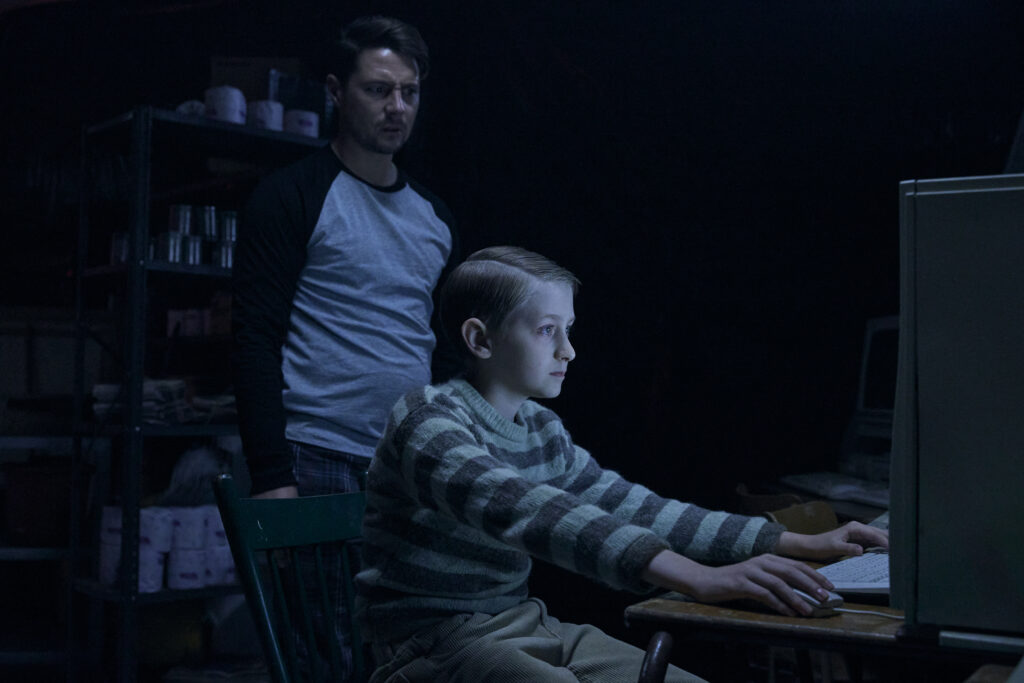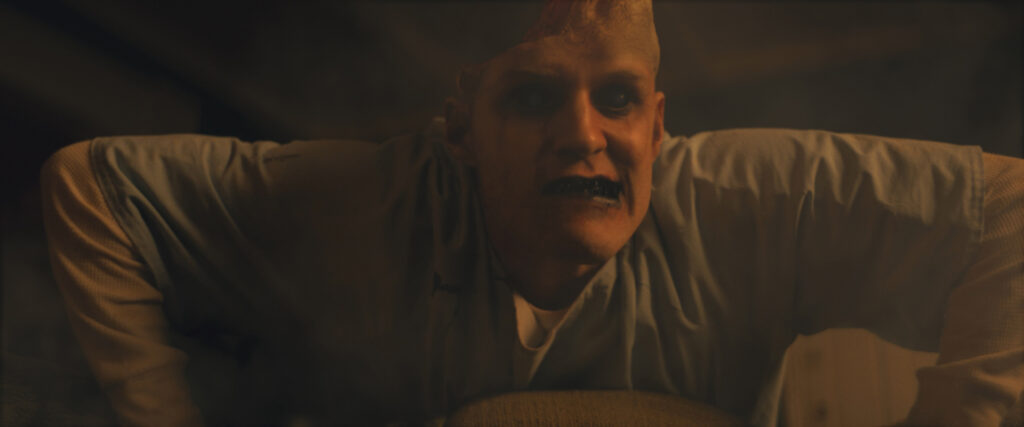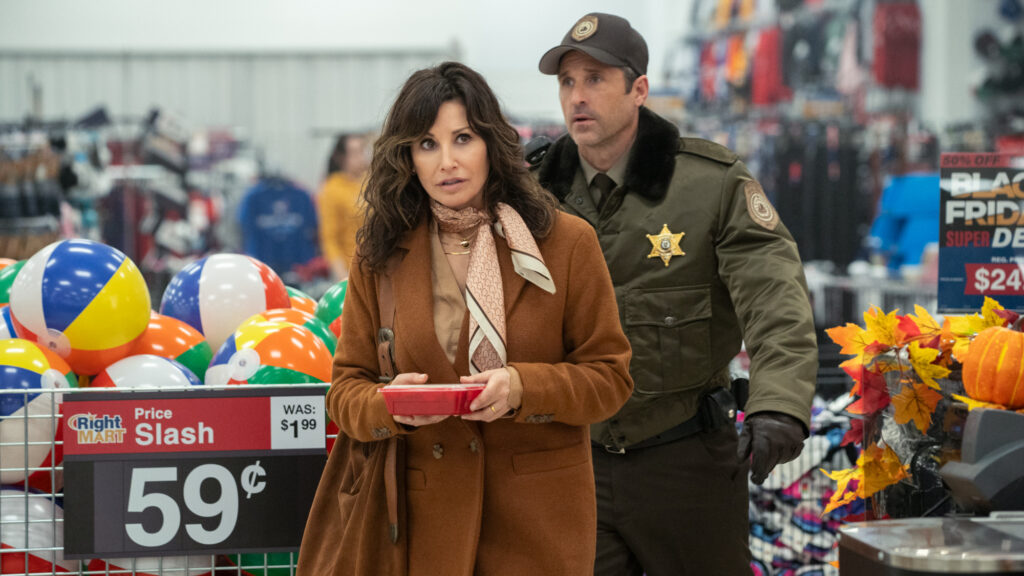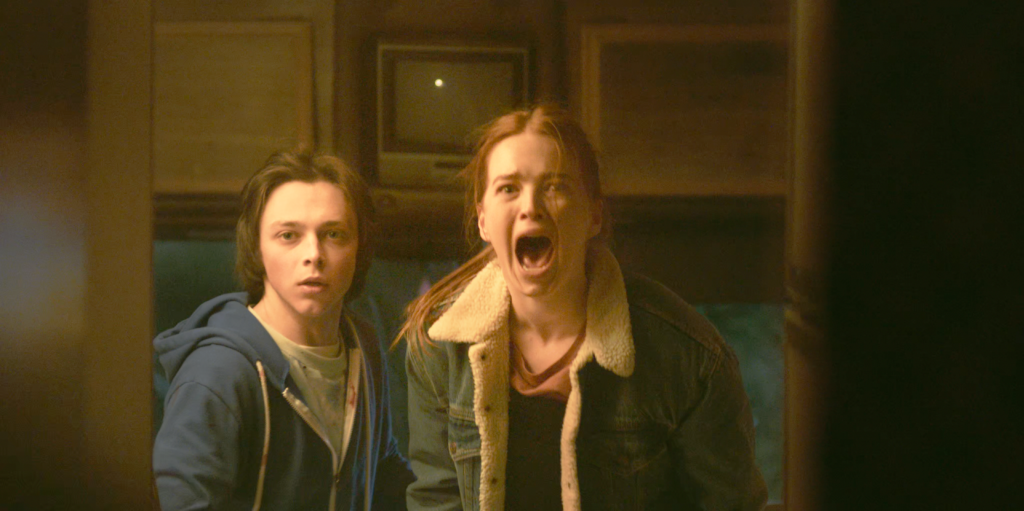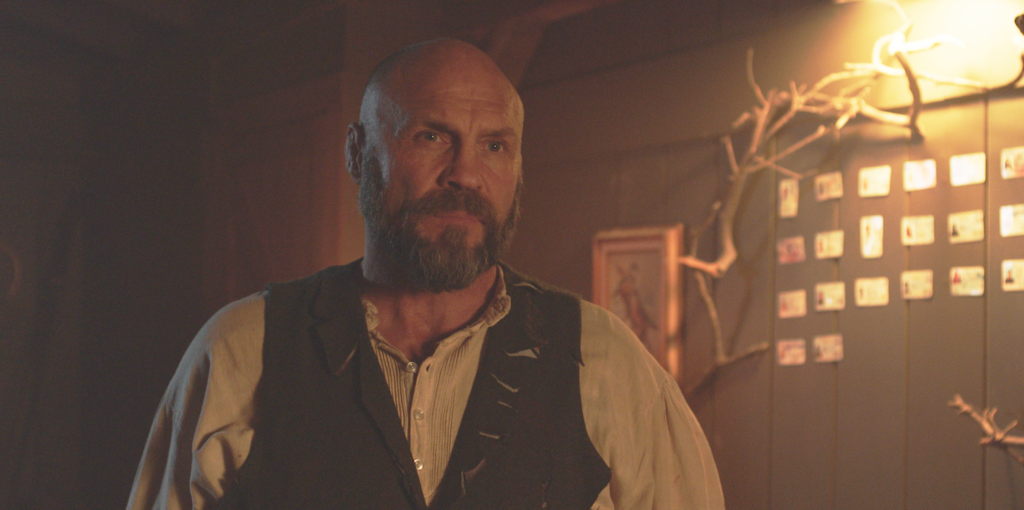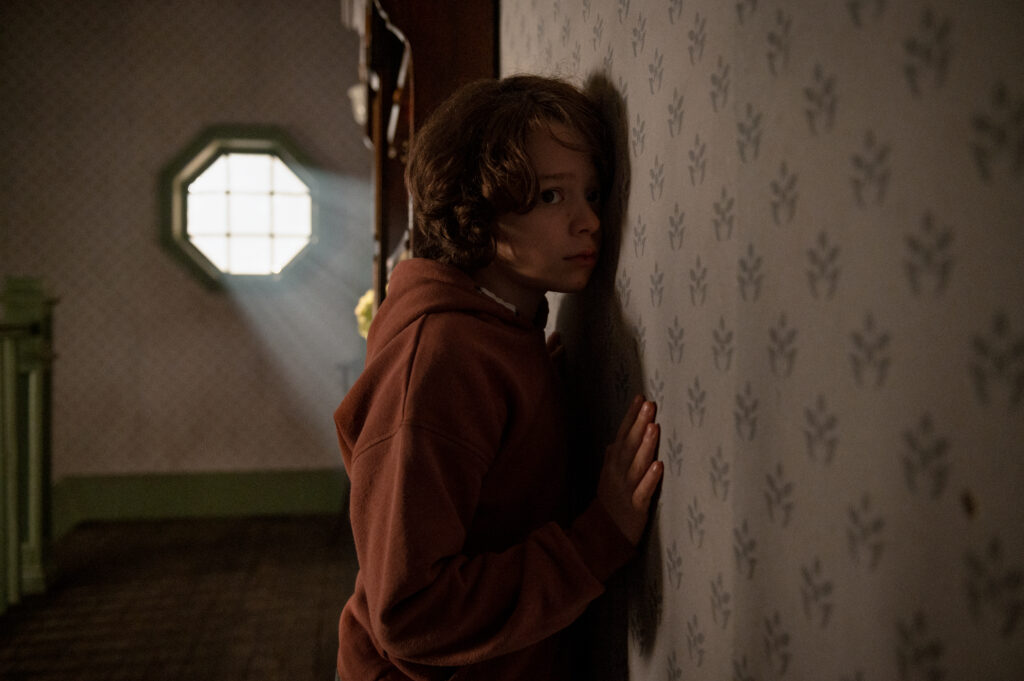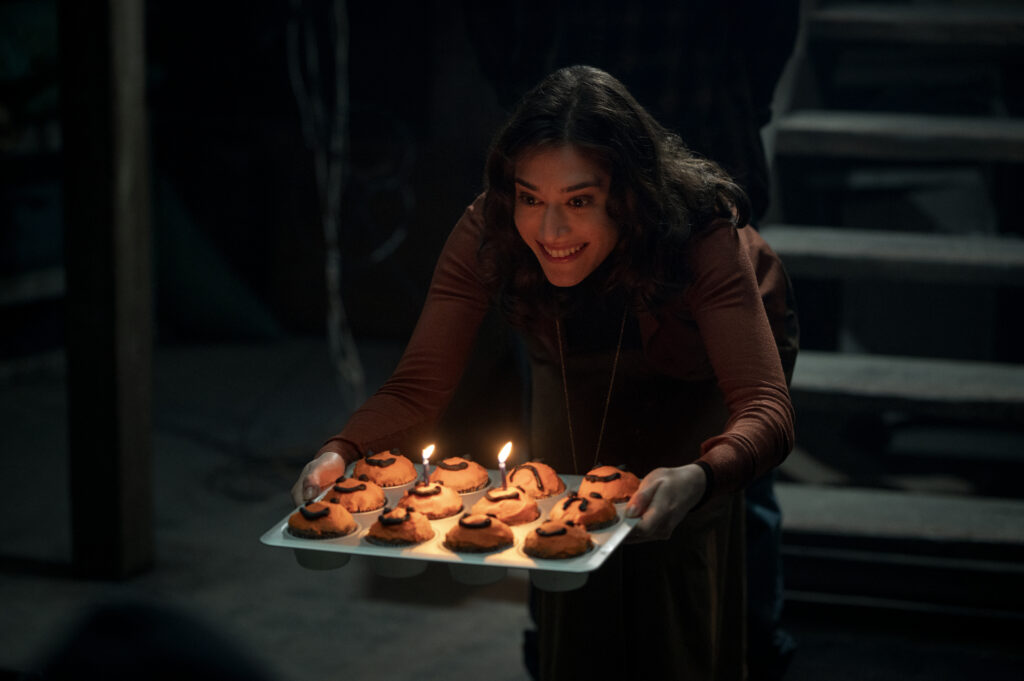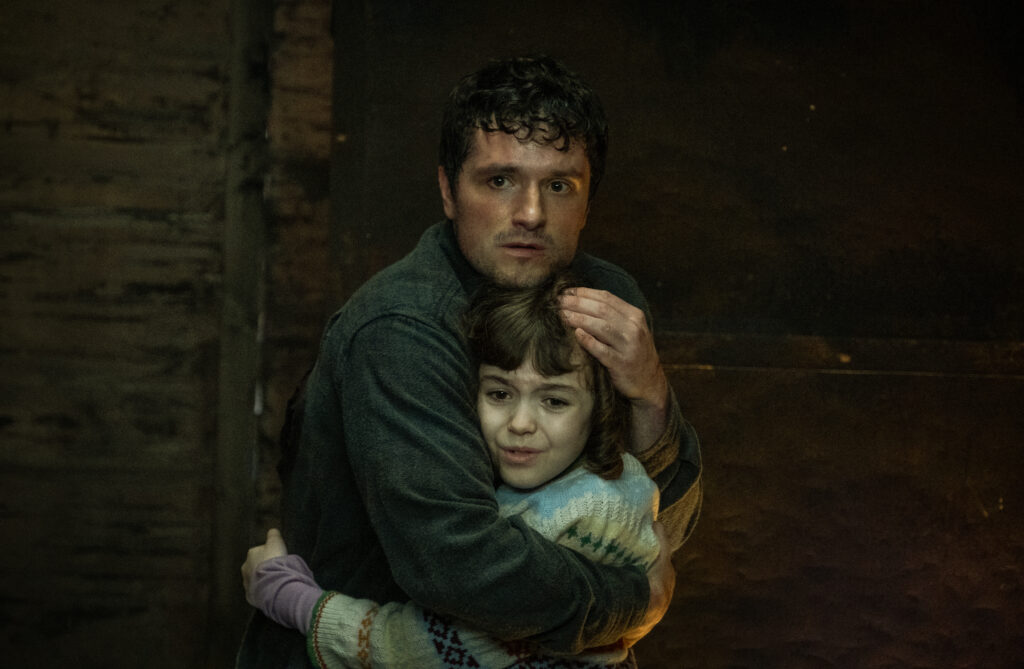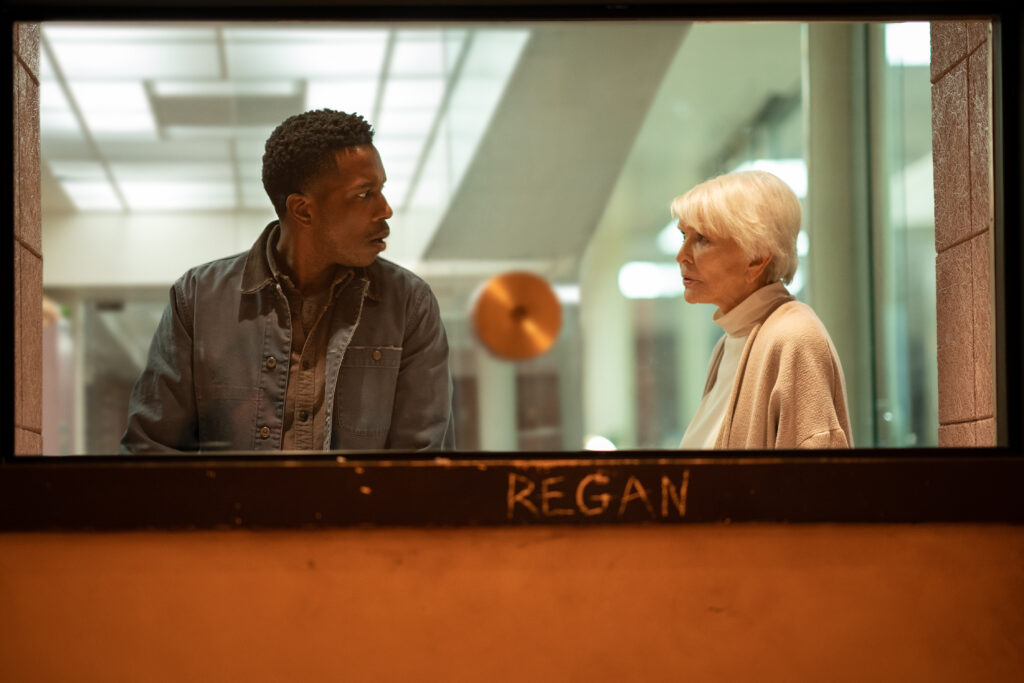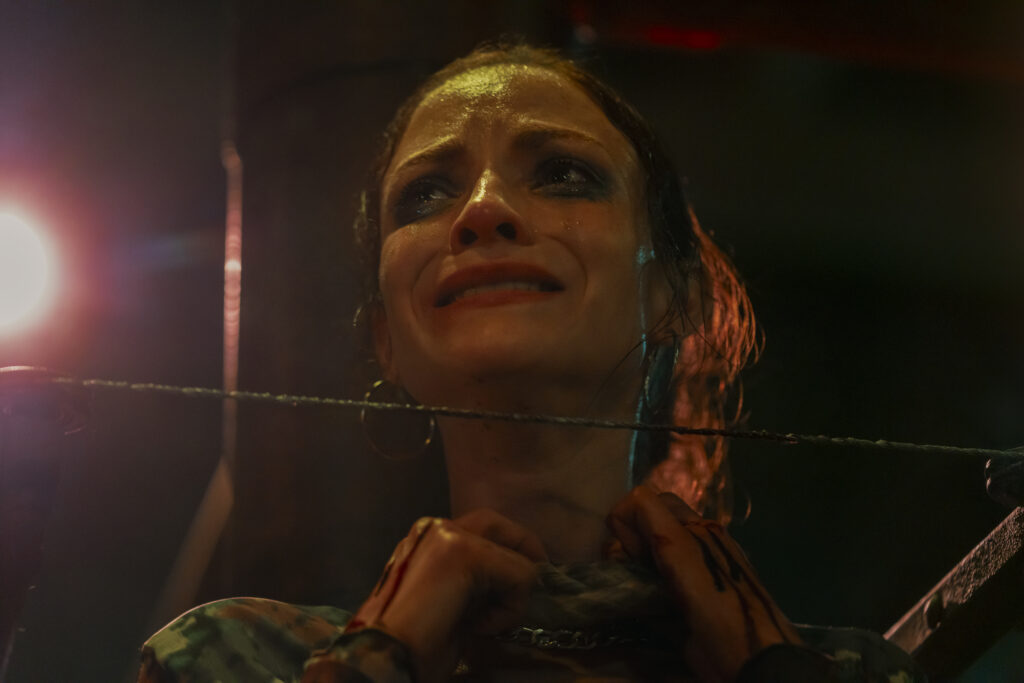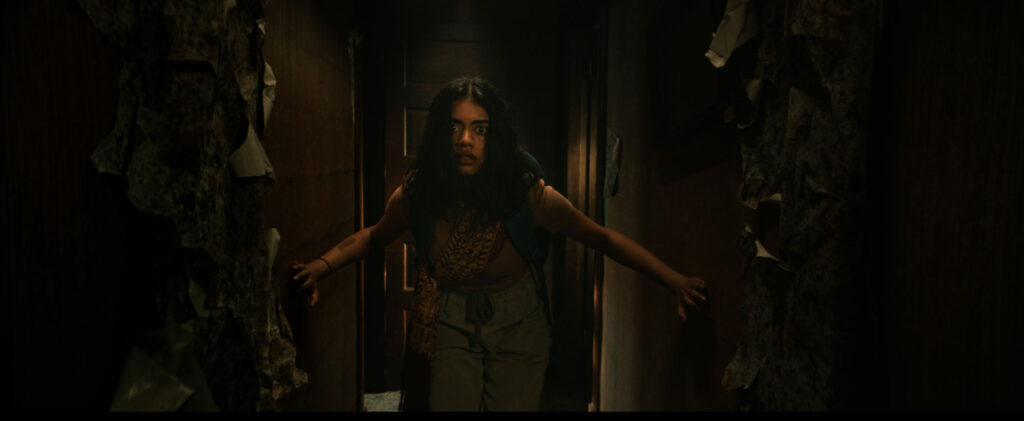January 3, 2024
by Carla Hay
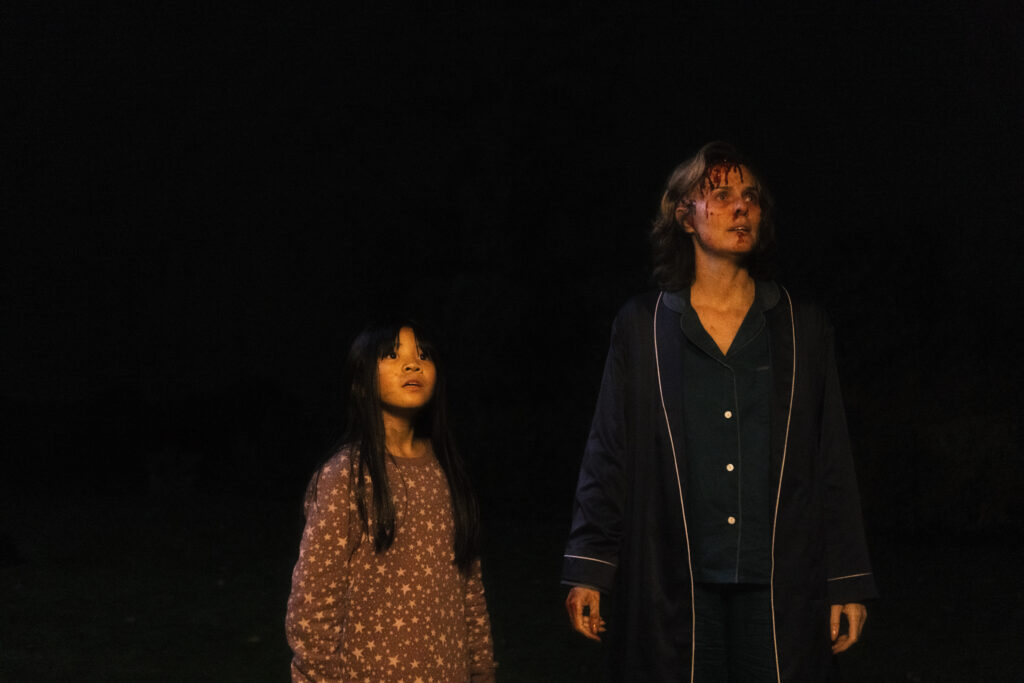
Directed by Paris Zarcilla
Some language in Tagalog with subtitles
Culture Representation: Taking place in an unnamed in city in England, the horror film “Raging Grace” features a cast of Filipino and white characters (with one black person) representing the working-class, middle-class and wealthy.
Culture Clash: A live-in housekeeper and her daughter experience terror inside the mansion of a wealthy recluse.
Culture Audience: “Raging Grace” will appeal primarily to people who are interested in watching eerie horror movies that include issues related to classism, racism, immigration and generational trauma.

The story in “Raging Grace” gets a bit messy, and some of the acting is too stiff, but it’s a genuinely unique horror movie that succeeds in offering many effective jump scares, along with astute observations about immigrant exploitation. The first third of the movie is too repetitive. Thing don’t get interesting until the last two-thirds of the film, when a character emerges from a coma and becomes a major part of the story.
Written and directed by Paris Zarcilla, “Raging Grace” had its world premiere at the 2023 SXS Film & TV Festival, where it won the grand jury prize for Best Narrative Feature, and Zarcilla was awarded the Thunderbird Rising Award for debut directors. “Raging Grace” is a story that mixes supernatural horror with the real-life horror of undocumented immigrants being exploited by employers. Zarcilla, who was born and raised in England to Filipino parents, has said in interviews that the movie was inspired by his childhood memories of helping his immigrant mother clean houses for wealthy people.
“Raging Grace” (which takes place in an unnamed city in England) centers on a housekeeper named Joy (played by Max Eigenmann), who is a single mother to a mischievous daughter named Grace (played by Jaeden Paige Boadilla), who is about 7 to 8 years old. Joy, who is originally from the Philippines, works as a housekeeper for an agency that knows she’s an undocumented immigrant. Grace was born in England.
Grace’s father is a British citizen who was not married to Joy and is no longer in a relationship with Joy. He is also an absentee father to Grace. Joy has lied to Grace by saying that Grace’s father is dead. Joy is constantly nervous and worried about many things. She gets frightened easily by small noises. At night, Joy has nightmares, some of which are flashbacks to when Grace’s father physically abused Joy. The movie eventually gives more details about who Grace’s father is.
Joy has made plans to get fraudulent immigration documents (such as a fake visa), which will cost her £15,000. She only has £10,000. Out of desperation, Joy takes a six-week, live-in housekeeping job that will pay £6,000. It’s an “under-the-table payment” job where Joy was hired directly by the employer, who asks Grace not to tell the agency.
The person who hires her for this job is a wealthy woman named Katherine (played by Leanne Best), who is very moody and strange. Katherine alternates between being cheerful and being coldly abrupt. She has hired Joy to be the housekeeper and caretaker for Katherine’s bedridden uncle Nigel Garrett (played by David Hayman), who’s called Mr. Garrett in the movie. He lives with Katherine in a secluded mansion, where he is in a coma and breathes through an oxygen tube.
Joy arrives at the mansion and smuggles Grace inside, because Joy knows that she’s not allowed to have a child with her on this job. Joy avoids answering Katherine’s question when Katherine asks Joy if Joy has any children. There are no other servants in the mansion. During Joy’s first few days on the job, Katherine gives a little bit of information about her family, by saying she’s the last living relative of her uncle Nigel.
Joy is professional and polite, but she is terrified of losing this job, because the person who will supply Joy with the illegal immigration documents expects her to pay the full £15,000 before he leaves the area in the following month. The money that Joy gets from Joy’s housekeeping work not only supports herself and Grace but Joy also sends some money to unnamed relatives in the Philippines. It isn’t made clear in the movie if Grace is homeschooled or if she is on a break from school, but Grace stays with Joy during day and doesn’t have any interaction any other children.
Katherine gives some basic instructions to Joy on how to look after the house. Katherine (who is not married and has no children) has a busy career (it’s later revealed that she’s a lawyer), so Joy gets minimal supervision during the day. However, Katherine can and does stop by the mansion unannounced. “Raging Grace” takes a while to get to the real horror of the story, because so much of the first third of the movie consists of scenes where Grace tries to avoid being seen by Katherine when Katherine is in the house.
Grace is the type of prankster who will do things like put jam in ketchup, as she does in the movie’s first scene when she is having dinner with Joy. She’s not a bad kid, but she is very lonely, restless and stubborn. And in a horror movie where there’s a kid in a creepy mansion, it should come as no surprise that Grace can see ghosts.
Yes, “Raging Grace” is a “haunted mansion” story. But who are the real threats to the safety of Grace and Joy? The ghosts or the living human beings who are in contact with Grace and Joy? Katherine eventually reveals that she’s very racist and thinks Filipino people and immigrants are inferior to white British people.
Through a series of circumstances that won’t be revealed here, Mr. Garrett comes out of his coma. This isn’t spoiler information, since Mr. Garrett regaining consciousness is in the movie’s trailer. When he emerges from his coma, he drops a bombshell on Joy: He tells her that he doesn’t have a niece.
The rest of “Raging Grace” turns into an intriguing mystery that keeps viewers guessing on who’s telling the truth and who’s lying. And what about the ghosts in the mansion? Who are they? Those answers are also revealed in the movie.
Eigenmann gives a convincing performance as protective mother Joy, while Boadilla’s often-flat delivery of her dialogue as Grace needed a lot of improvement. The movie is called “Raging Grace,” but her mother Joy is really the catalyst for much of what happens in the movie. “Raging Grace” co-star Best is competent and occasionally campy in her role as Katherine, while Hayman has the standout performance as the complicated Mr. Garrett.
“Raging Grace” writer/director Zarcella shows a knack for creating horror visuals and making editing choices that cause genuine terror and suspense. The movie stumbles a bit in trying to do too much in how a certain character seems to go back and forth between appearing to be a villain and appearing to be a hero. It starts to become muddled and comes dangerously close to ruining the movie’s narrative. However, the last 15 minutes of “Raging Grace”—despite the narrative becoming a little disjointed in a showdown scene—has enough for the movie to end in a memorable and powerful way.
Brainstorm Media & Doppelgänger Releasing released “Raging Grace” in select U.S. cinemas on December 1, 2023. The movie was released on digital and VOD on December 8, 2023. “Raging Grace” was released in the United Kingdom on December 29, 2023.

